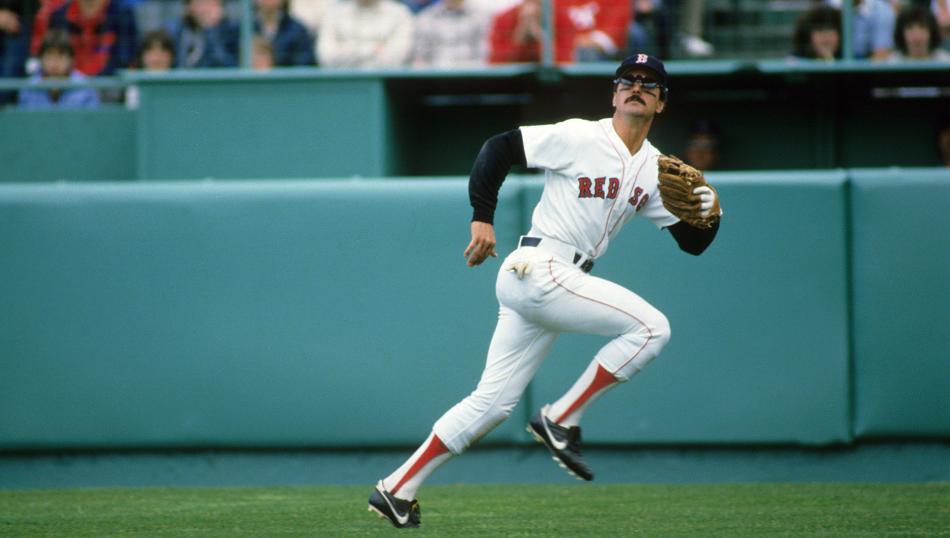As I draw near the end of my series of articles on the greatest Red Sox at each position, I come to the right fielders. This group of five right fielders are the final defensive position left to cover. Following this article I will still have the designated hitters to go and a wrap up. There were not many competitors for the top five, yet the group is quite solid.
Dwight Evans
Dwight Evans is both the greatest offensive and greatest defensive right fielder in Red Sox history. Personally, I am a strong advocate of “Dewey” getting his number retired. Always underrated nationally, Dewey received frighteningly little support for the Hall of Fame and has not been brought up by any veteran’s committee for election. I believe if he had hit in the 70’s like he did during the 80’s he would probably be a Hall of Famer.
Evans batted .272 with 379 home runs, 1346 RBI and 2373 base hits as a Red Sox. He walked a lot, leading the league in walks three times. This helped him to a .369 on base percentage and .842 OPS. In Boston Red Sox history he ranks 5th in home runs, 4th in base hits, 4th in doubles, 5th in RBI, 3rd in runs scored and 3rd in walks. As I stated earlier, Dewey developed as a hitter over time and was a dangerous one at the plate in the 80’s. During that decade he hit 30 home runs three times and drove in over 100 runs four times. His average season was .280 with 26 home runs, 90 RBI and a .385/.497/.882. A great fielder who can put up numbers like that? How did he fall off the ballot after three years?
When it comes to fielding, Dwight Evans not only had a strong glove but a strongarm. He accumulated 155 assists from right field. He led the league in this category three times and in putouts four times. Evans had a career .987 fielding percentage in right field. All of this led to Dewey winning a total of eight Gold Gloves.
Evans twice finished in the top five for MVP votes. In 1981, a season shortened by a strike, Evans led the league in home runs, walks, OPS and WAR. He finished third in the MVP vote that year, but probably deserved better. Had he won the MVP like some statistics suggest he should have, maybe he would have garnered more respect from Hall of Fame voters. He was also batting .341 with a 1.031 OPS at the time of the strike on June 11th, so it interrupted a fantastic start to the season for him.
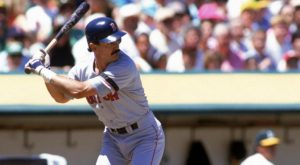
Jackie Jensen
I am giving Jackie Jensen the nod at number two given his dominance over a six-year stretch. Jensen spent seven years with the Sox after returning for one season following a short retirement. He batted .282 with the Red Sox, hitting 170 home runs. Jensen had an excellent .374/.478/.852 slash line.
During his first six seasons, 1954-59, Jensen batted .285 and averaged 26 home runs and 111 runs batted in per season. He had two 20-20 seasons and led the league in RBI three times in five seasons. The only season he didn’t reach 100 RBI was 1956, when he drove in 97 and led the league with 11 triples. He won the MVP in 1958 when he bashed 35 homers and drove in 122 runs. The next season he hit 28 home runs and won the Gold Glove Award.
Following the 1959 season Jackie Jensen abruptly retired. A large reason for his retirement during his prime and at the age of 32 was due to a fear of flying. The Major Leagues were expanding and new teams were popping up on the other side of the country. Flying was becoming more constant and Jensen could hardly bear it. The other reason was being away from his family so many months of the year, but I’m sure if he didn’t have to fly he would not have retired. Jensen came back in 1961 after a year off. However, following a year layoff he was only okay. Jensen batted .263 with 13 home runs and decided to retire for good.
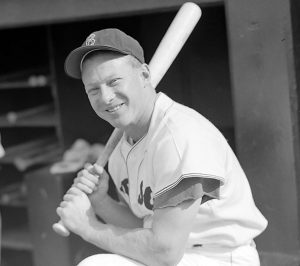
Harry Hooper
Hooper played with the Red Sox for 12 seasons during the dead-ball era. He was a part of the “golden outfield” with Tris Speaker and Duffy Lewis. The three of them formed one of the greatest outfields in the early days. Hooper was considered a great defender, leading the league in putouts seven times and assists three times. He had 30 outfield assists in 1910.
At the plate, Hooper batted .272 with 1707 base hits. Having played in the dead-ball era, Hooper did not hit many home runs. However, Hooper did hit 130 triples as a Red Sox. Hooper also stole 300 bases during his 12 seasons with the team. He also came up with some clutch hits, batting .293 in World Series play. In 1915 he batted .350 and hit two homers during the series against the Phillies. Hooper won four World Series with the Red Sox.
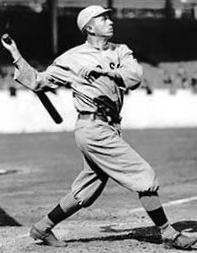
Outfielder Harry Hooper of the Boston Red Sox bats before a game during the 1909 season at Huntington Avenue Grounds. (Photo by National Baseball Hall of Fame Library)
Tony Conigliaro
Everyone knows Tony C’s story. It is my belief had he not been hit by that pitch in the eye, Conigliaro would have hit 500 home runs and potentially threatened 600. It is practically a guarantee he would be at least number two on this list, if not first. As it stands, he is one of the biggest what-ifs in sports history. However, do not think he is only on here for what might have been. During the time he had with the Red Sox, Conigliaro hit 162 home runs. He hit 32 home runs at the age of 20 in 1965. He would then go on to become the youngest American Leaguer to ever reach 100 career home runs.
Conigliaro had 104 home runs at the time of his beaning. This came over the course of two full seasons and two partial seasons. He had averaged 35 home runs per 162 games played. In 1970, his second season back from the horrific beaning, Conigliaro hit a career high 36 home runs. Still just 25 years old, he seemed to have recuperated and be entering his prime. Unfortunately his eyesight took a turn for the worse in the offseason and he was never able to have success again. Despite the what-ifs, Tony C was still one of the bigger power hitters Fenway Park has seen.
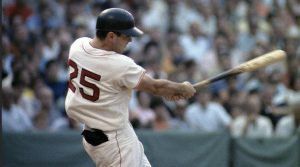
Trot Nixon
The ultimate “dirt dog” rounds out the top five. Trot was seemingly a prospect forever, having been drafted seventh overall in 1993. Trot didn’t become a full-time Major Leaguer until 1999. He proceeded to have a few solid seasons and a couple excellent ones. Nixon was a .278 hitter in Boston with 133 home runs and 912 base hits. He had some very nice rate stats, hitting to a .366/.478/.845 slash line.
From 2001-2003, Nixon hit 79 home runs. 2003 was his best season, batting .306 with 28 home runs and a .975 OPS. He was also very good in 2004, when he was on the field. Nixon missed a lot of time that year but was able to contribute to the Red Sox breaking the curse. Thanks in part to his “all out” play, Nixon missed a lot of time over those next couple seasons with injuries.
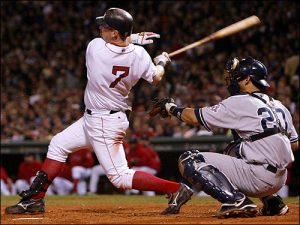
Honorable Mentions:
One can expect a certain current Red Sox player to be joining these ranks in the not too distant future…
Mookie Betts, J.D. Drew, Tom Brunansky
Greatest Right-Handed Pitchers
